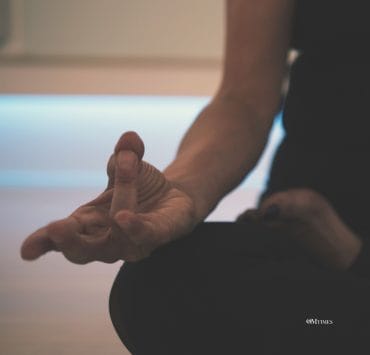Tui Na massage, also known as Chinese therapeutic massage, is a form of manual therapy or bodywork practiced in China for over 3,000 years. This ancient healing art is deeply rooted in Traditional Chinese Medicine (TCM) and has been used to treat various physical and emotional ailments.
Exploring Tui Na Massage: A Traditional Chinese Healing Art
The term “Tui Na” is derived from the Mandarin words “tui,” which means to push, and “na,” which means to grasp. Together, they describe the primary techniques used in this form of massage – pushing and grasping.
These techniques, along with others such as kneading, rolling, and pressing, are applied to the body’s meridians and acupoints to promote balance and flow of Qi or vital energy.
Tui Na massage has evolved over centuries, and various family styles have emerged, each with unique techniques and approaches.
Here are some of the prominent family styles of Tui Na:
1. Lingnan Style: Originating from the Guangdong province of China, Lingnan style focuses on soft tissue manipulation and joint mobilization techniques. It is known for its gentle yet effective approach to addressing musculoskeletal issues.
2. Tai Chi Style: This style combines Tui Na with principles taken from Tai Chi and Qigong. The practitioner uses slow and fluid movements, employing the practitioner’s body weight to apply pressure and create a harmonious energy flow.
3. Wu Style: Developed by Wu Longxiu, this style emphasizes pushing and rolling techniques to stimulate the body’s energy channels and balance Yin and Yang. Wu-style Tui Na incorporates specialized hand techniques and can be quite vigorous.
4. Zhang Style: Created by Dr. Zhang Jie, this style integrates Tui Na with acupuncture and physical therapy. The emphasis is on precise acupoint manipulation and deep tissue techniques to promote healing and relieve pain.
5. Bao Style: Bao style Tui Na focuses on the joints and skeleton, using techniques such as traction, rotation, and stretching to restore optimal alignment and mobility. This style is particularly beneficial for treating spinal and joint conditions.
Now, let’s explore five self-explanatory Tui Na techniques that you can practice for self-care:
1. Pushing technique (Tui Fa): Place your palm flat on the targeted area and press gently as you push away. This technique is useful for stimulating blood and energy flow and relieving tension in the muscles.
2. Grasping technique (Na Fa): Use your thumb, fingers, or palm to grip tightly and then repeatedly release on the concern area. This technique helps to relieve muscle knots and promote the circulation of Qi and blood.
3. Kneading technique (Mo Fa): Use your knuckles, fingertips, or palms to press and knead the muscles in a circular motion. This technique is great for loosening tight muscles and improving blood circulation.
4. Rolling technique (Gun Fa): Use the heel of your hand or forearm to roll firmly along the length of a muscle or a meridian. Rolling can help to stretch the muscles, relieve tension, and promote relaxation.
5. Percussion technique (Da Fa): Use your palms, fingertips, or fists to lightly tap or drum on the area being treated. This technique is invigorating and can help stimulate circulation and energize the body.
Helpful tips
It can be helpful to apply these techniques using some Chinese massage oils such as UI oil, Black Ghost oil, or Po Sum On oil.
You can also use a towel or sheet underneath your grip so as not to pull the hairs on the arms or legs while kneading or grasping.
If trying these techniques on someone, be sure to position your body so that you are directly over the area you are working on in order to preserve your posture.
Working along the Chinese meridian lines can be beneficial to the treatment.
A simple fact to remember is that the twelve major meridians are energy lines that map the entire body, running from the crown of the head to the base of the feet.
They run on each side of the body, one side mirroring the other.
Remember, when practicing Tui Na techniques on yourself, it’s important to start slowly and gently applying pressure. Gradually increase intensity as your body becomes accustomed to the techniques.
If you have any existing health conditions or concerns, it is advisable to consult with a qualified Tui Na practitioner or healthcare professional before attempting self-massage.
Tui Na massage offers a holistic approach to healing and wellness, combining physical manipulation with the principles of Traditional Chinese Medicine. Whether received in a professional setting or practiced at home for self-care, Tui Na can help restore balance and promote overall well-being.
You will also enjoy Andrew Pacholyk: Spiritual Journey through Life’s Seasons
Click HERE to Connect with your Daily Horoscope on OMTimes!
Visit Our Astrology Store for Personalized Reports
About the Author
Connect with Andrew Pacholyk, MS L.Ac at peacefulmind.com “Living Life, Consciously” Alternative medicine and therapies for healing mind, body & spirit! ![]()
OMTimes is the premier Spiritually Conscious Magazine. Follow Us On Facebook, Twitter, Instagram, Linkedin, Pinterest, and Youtube
Andrew Pacholyk, MS, L.Ac. has been in the alternative health field for over 18 years. He is an expert in treating infertility and gynecology, pain management and anti-aging therapies. His knowledge, expertise and clinical training has offered him the ability to experience and continually learn about the body and its energy system in health as well as in disease.










